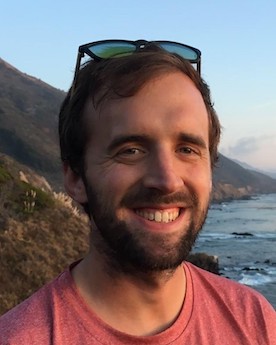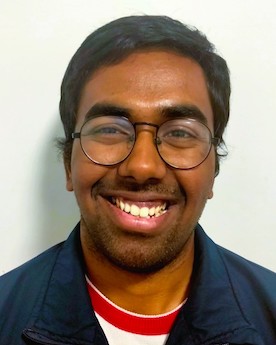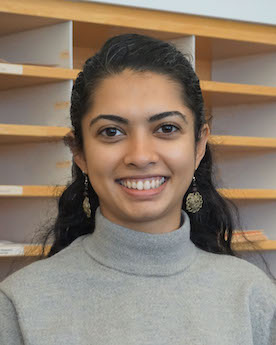
University of California, Los Angeles
Appointed in 2006
Read more
University of California, Los Angeles
Appointed in 2006

University of Utah School of Medicine
Appointed in 2005
Read more
University of Utah School of Medicine
Appointed in 2005

University of Wisconsin, Madison
Appointed in 1971
Read more
University of Wisconsin, Madison
Appointed in 1971

University of Amsterdam, Netherlands
Appointed in 1960
Read more
University of Amsterdam, Netherlands
Appointed in 1960


Harvard University Medical School
Appointed in 2000


Stanford University
Appointed in 2006

University of California, San Francisco
Appointed in 2012
Read more
University of California, San Francisco
Appointed in 2012

Harvard University Medical School
Appointed in 1973
Read more
Harvard University Medical School
Appointed in 1973

University of California, San Francisco
Appointed in 1997
Read more
University of California, San Francisco
Appointed in 1997


Washington State University
Appointed in 1999

University of California, San Francisco
Appointed in 1988
Read more
University of California, San Francisco
Appointed in 1988


Harvard University
Appointed in 2008


Harvard University
Appointed in 2010

National Institute for Medical Research, England
Appointed in 1973
Read more
National Institute for Medical Research, England
Appointed in 1973

Whitehead Institute for Biomedical Research
Appointed in 1992
Read more
Whitehead Institute for Biomedical Research
Appointed in 1992

California Institute of Technology
Appointed in 1999
Read more
California Institute of Technology
Appointed in 1999

University of California, Berkeley
Appointed in 2001
Read more
University of California, Berkeley
Appointed in 2001

University of Wisconsin, Madison
Appointed in 1966
Read more
University of Wisconsin, Madison
Appointed in 1966

University of California, San Francisco
Appointed in 1996
Read more
University of California, San Francisco
Appointed in 1996

Karolinska Institutet, Stockholm
Appointed in 1971
Read more
Karolinska Institutet, Stockholm
Appointed in 1971


Yale University
Appointed in 2008
Current research: I am investigating the causes of differences in lifespan between individuals, using the nematode work Caenorhabditis elegans as a model organism.
My overall scientific interest is in the control of noise in biological systems: how do organisms buffer themselves from, or exploit, stochastic events? How do individuals in a population begin to diverge from one another, and what are the consequences?
After growing up in Montana and majoring in biological sciences at Stanford University, I did my PhD training in the lab of Dr. Julie Theriot at Stanford, studying shape variability in populations of bacteria and epithelial cells. This work allowed us to devise qualitative and quantitative models of how the biochemistry of the actin cytoskeleton influences the large-scale geometry of moving cells. I am now with the lab of Dr. Frank Slack at Yale. And to the extent that postdocs permit themselves to venture outside the lab, I like to spend my time hiking and cycling.

Memorial Sloan-Kettering Cancer Center
Appointed in 1994
Read more
Memorial Sloan-Kettering Cancer Center
Appointed in 1994

University of California, Berkeley
Appointed in 2023
Read more
University of California, Berkeley
Appointed in 2023
As we learn new behaviors, we still have to remember old behaviors as well. Thus there is a tension between the flexibility in learning and the stability of maintaining behaviors. Dr. Mark Plitt proposes that neural circuits resolve this tension by using neuromodulation to adaptively switch between stable and labile states. He will investigate these questions in Dr. Yvette Fisher’s lab at the University of California, Berkeley. There, Dr. Plitt will use a fly’s head direction circuit – a neuronal representation of the fly’s orientation in space – to investigate the tradeoffs between flexibility and stability. Dr. Plitt predicts that different neurotransmitters will reinforce learning and maintenance of memory. By developing this powerful model system, Dr. Plitt hopes to uncover physiological and computational principles that govern flexible learning.
As a graduate student in Dr. Lisa Giocomo’s lab at Stanford University, Plitt investigated hippocampal “place” cell remapping – a cellular process that encodes an animal’s memory-guided navigation. Specifically, Dr. Plitt demonstrated that hippocampal remapping patterns are predictably driven by an animal’s prior experience. This expertise in memory establishment will assist Dr. Plitt in investigating the tradeoff between stability and flexibility during adaptive learning.

Harvard University Medical School
Appointed in 2013
Read more
Harvard University Medical School
Appointed in 2013
I am interested in the mechanisms that guide proteins to assemble into mesoscale structures, from force-generating cytoskeletal polymers to metabolic microcompartments. While the basic principles underlying these systems underpin much of biological organization, I focus on tractable polymers found in bacteria. For example, as a graduate student in Dyche Mullins’ lab at UCSF, I reconstituted a three-component bacterial plasmid-segregating actin system in vitro and elucidated the multiple regulatory functions of its single accessory protein. As a postdoc, I have investigated the assembly of the carboxysome, a protein organelle in cyanobacteria that we found grows like a crystal until it is rapidly coated by a layer of shell proteins. Currently, I am interested in a long-range protrusive apparatus actuated by chemical changes.
I hope that a thorough understanding of these machines can permit the rational design of self-assembling structures suited for use in nanotechnology, metabolic engineering, and drug delivery.


Columbia University
Appointed in 2019


University of Oregon
Appointed in 1991


Princeton University
Appointed in 1973

Harvard University Medical School
Appointed in 1997
Read more
Harvard University Medical School
Appointed in 1997

University of Illinois at Urbana-Champaign
Appointed in 2004
Read more
University of Illinois at Urbana-Champaign
Appointed in 2004


Wistar Institute
Appointed in 1965

Carnegie Mellon University /
University of Rochester
Appointed in 1977
Read more
Carnegie Mellon University / University of Rochester
Appointed in 1977


University College, England
Appointed in 1978


Rockefeller University
Appointed in 1985

University of California, San Francisco
Appointed in 2023
Read more
University of California, San Francisco
Appointed in 2023
The hippocampus is a mental GPS that uses visual information to determine relative location. However, the neural pathways that convey visual information to the hippocampus are unknown. Dr. Chinmay Purandare will investigate this information transmission in Dr. Massimo Scanziani’s lab at the University of California, San Francisco. Dr. Purandare will use a novel set of visual cues, developed during his graduate studies, to directly activate hippocampal neurons and determine which visual brain regions are informing the hippocampus. Furthermore, Purandare would probe if the visual information conveyed is different depending on whether the subject is moving versus externally generated visual motion. Dr. Purandare’s research will further our understanding of circuit level connections between visual pathways and the hippocampus.
As a graduate student in Dr. Mayank Mehta’s lab at the University of California, Los Angeles, Purandare explored the minimal set of cues necessary for driving hippocampal responses. He developed novel visual stimuli and found that the hippocampus responds like sensory cortices when presented with these cues. This research led Dr. Purandare to the question of how these visual cues reach the hippocampus, which he will now explore in Dr. Scanziani’s lab.

University of California, Santa Cruz
Appointed in 2018
Read more
University of California, Santa Cruz
Appointed in 2018
RNA polymerase II (RNAPII) kinetics are well-known to influence splicing patterns. Recent evidence has revealed that many introns are spliced right after they are transcribed, opening the potential for cross-regulation between these two key processes. During transcription, RNAPII pauses during initiation and during 3’ end processing, and these pauses are thought to allow the recruitment of necessary protein factors. Although more transient, RNAPII also pauses throughout elongation, however the significance of these pauses is unclear. Importantly, many of these pauses occur near the exon-intron boundaries._x000D_
_x000D_
I am working to uncover the mechanisms that govern co-transcriptional splicing decisions. I am investigating the impact of RNAPII pausing on changes in splicing patterns using a short artificial arrest sequence, which allows me to engineer RNAPII pauses in any location. This DNA element, combined with improved genome-wide approaches such as Single Molecule Intron Tracking (SMIT), will allow me to assess how RNAPII pauses impact splicing patterns in both yeast and human cells.

Scripps Research Institute
Appointed in 1995
Read more
Scripps Research Institute
Appointed in 1995

University of Texas Southwestern Medical Center
Appointed in 2003
Read more
University of Texas Southwestern Medical Center
Appointed in 2003


Harvard University
Appointed in 1971

Boston Children's Hospital /
Harvard University Medical School
Appointed in 2019
Read more
Boston Children's Hospital / Harvard University Medical School
Appointed in 2019
A cornerstone concept of mammalian innate immunity is that our cells can detect bacteria and subsequently produce appropriate antibacterial responses. Bacterial detection is achieved through the action of protein receptors, called pattern recognition receptors (PRRs), that sense conserved bacterial molecules, termed pathogen-associated molecular patterns (PAMPs). Since the cellular localization of PRRs varies (e.g., cell surface, phagosomal lumen, cytosol), PRR and PAMP co-compartmentalization is required for bacterial detection. It therefore stands to reason that only bacteria that escape phagosomal confinement should have the capacity to stimulate cytosol-localized PRRs. In contrast, bacteria that cannot damage phagosomes will be confined (along with their PAMPs) to the phagosomal lumen, where they are only sensed by phagosome-localized PRRs. Despite this rationale, bacteria that are unable to escape from the phagosome (which is true for most bacteria studied to date) are somehow detected by cytosolic PRRs. I am studying how cytosolic PRRs gain access to phagosomal PAMPs, how phagosomal dynamics influence detection, how bacteria manipulate host-derived processes, and the consequences of bacterial detection on innate control of infection.

Fred Hutchinson Cancer Center
Appointed in 2001
Read more
Fred Hutchinson Cancer Center
Appointed in 2001


Yale University
Appointed in 1965


Stanford University
Appointed in 1975

Harvard University Medical School
Appointed in 1995
Read more
Harvard University Medical School
Appointed in 1995


Broad Institute
Appointed in 2023
Oxidative phosphorylation is a central metabolic pathway that occurs within mitochondria. Decline in oxidative phosphorylation capacity is observed during aging and in many diseases. Dr. Sahana Rao aims to investigate how a tumor suppressor gene also suppresses mitochondrial biogenesis. Dr. Rao will also use a genome-wide screen to identify novel regulators of mitochondrial biogenesis. Rao will conduct these studies in Dr. Vamsi Mootha’s lab at the Broad Institute. Collectively, these studies will provide insight into the regulation of mitochondrial biogenesis. They may also inform on mitochondrial dysregulation in aged or diseased states.
As a graduate student in Dr. Daniel Bachovchin’s lab at Memorial Sloan Kettering Cancer Center, Rao investigated inflammasomes – innate immune sensors that detect pathogenic signals and form large signaling complexes to alert immune cells. Dr. Rao’s studies elucidated molecular mechanisms of the activation of two inflammasome proteins, NLRP1 and CARD8, and established new tools to activate inflammasomes. With her extensive training as a chemical biologist, Rao will now study cellular metabolism and mitochondrial biogenesis in her postdoc.

Salk Institute for Biological Studies
Appointed in 1973
Read more
Salk Institute for Biological Studies
Appointed in 1973

University of California, Los Angeles
Appointed in 2013
Read more
University of California, Los Angeles
Appointed in 2013
My work in Alvaro Sagasti’s lab focuses on interactions between the epidermis and the axons of touch-sensing neurons. I am particularly interested in how the epidermis regulates axon repair following injury.
I grew up in Ithaca, NY and received my BS in Computational Biology from Brown University. During my graduate studies at University of Washington in Seattle, WA, I became interested in the remarkable and diverse behaviors of epithelial cells. For my thesis, I studied mechanisms of epithelial tube formation in C. elegans with Jim Priess at the Fred Hutchinson Cancer Research Center. The Priess lab was a great place to learn genetics and cell biology and I am currently applying this training to understand how our largest epithelial organ – the skin – regulates repair of the sensory nervous system. Outside of the lab, my wife and I enjoy exploring Los Angeles with our son.


University of Pennsylvania
Appointed in 1982

Massachusetts Institute of Technology
Appointed in 2009
Read more
Massachusetts Institute of Technology
Appointed in 2009
T cells recognize diverse molecular signatures of pathogens on the surfaces of infected or antigen-presenting cells, but a significant immune response is mounted against just a few of these signatures during a typical infection. I’m using mathematical models and computer simulations to study the mechanisms of this phenomenon, termed “immunodominance,¬î and its implications for viral infections, vaccine design, and autoimmunity.
I earned BAs in chemistry and mathematics from the University of Colorado at Boulder in 2003 and a PhD in physical chemistry from the University of California at Berkeley in 2008. ¬†Before I began working in Arup Chakraborty’s group at MIT, I studied light harvesting by photosynthetic plants and bacteria in the laser spectroscopy lab of Graham Fleming at Berkeley. This work inspired my interest in using theoretical and computational modeling to gain mechanistic understanding of complex biological systems. When not pursuing interdisciplinary science, I like to cook, run, swim, and read historical biographies.

Massachusetts Institute of Technology
Appointed in 2005
Read more
Massachusetts Institute of Technology
Appointed in 2005

California Institute of Technology
Appointed in 2007
Read more
California Institute of Technology
Appointed in 2007

University of Geneva, Switzerland /
Harvard University Medical School
Appointed in 1972
Read more
University of Geneva, Switzerland / Harvard University Medical School
Appointed in 1972